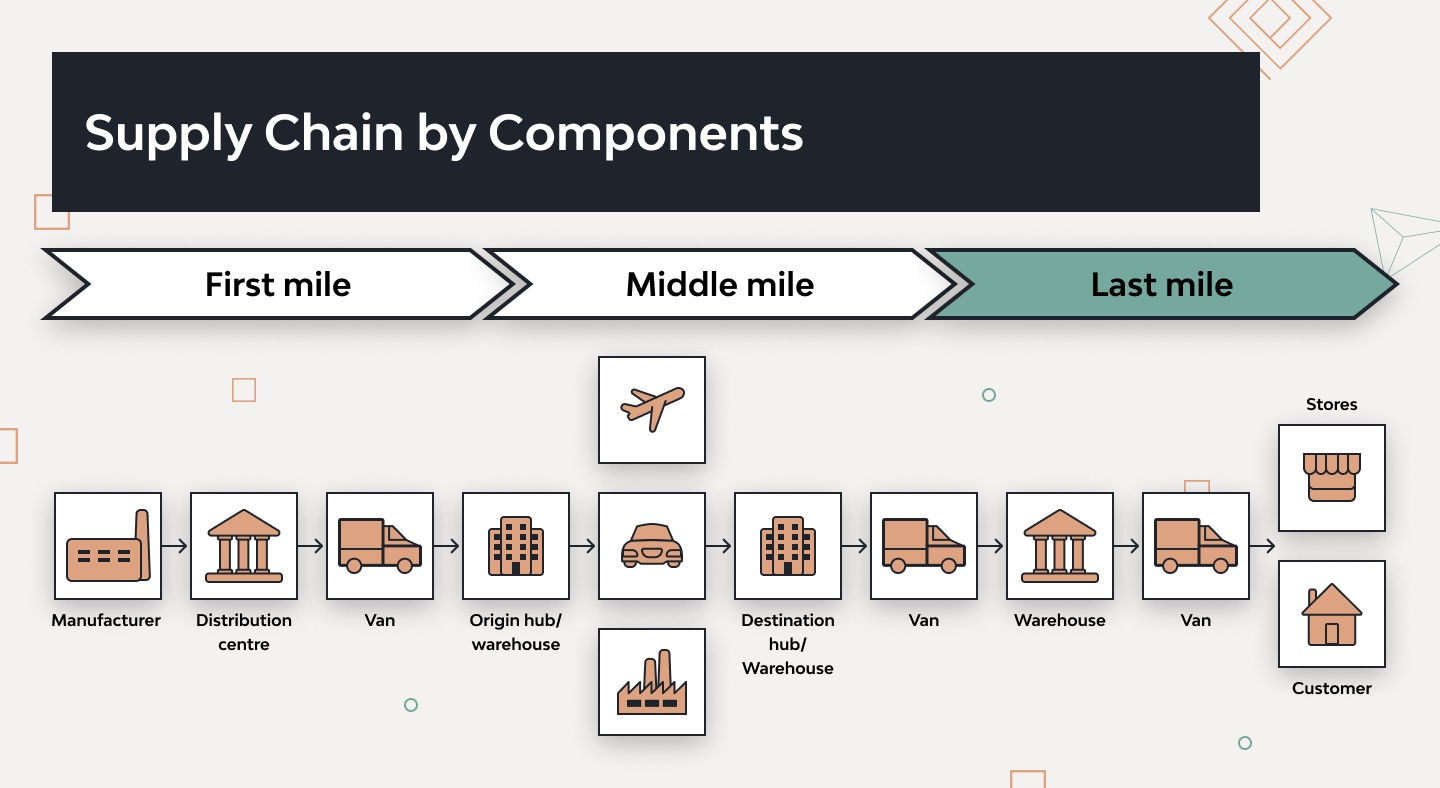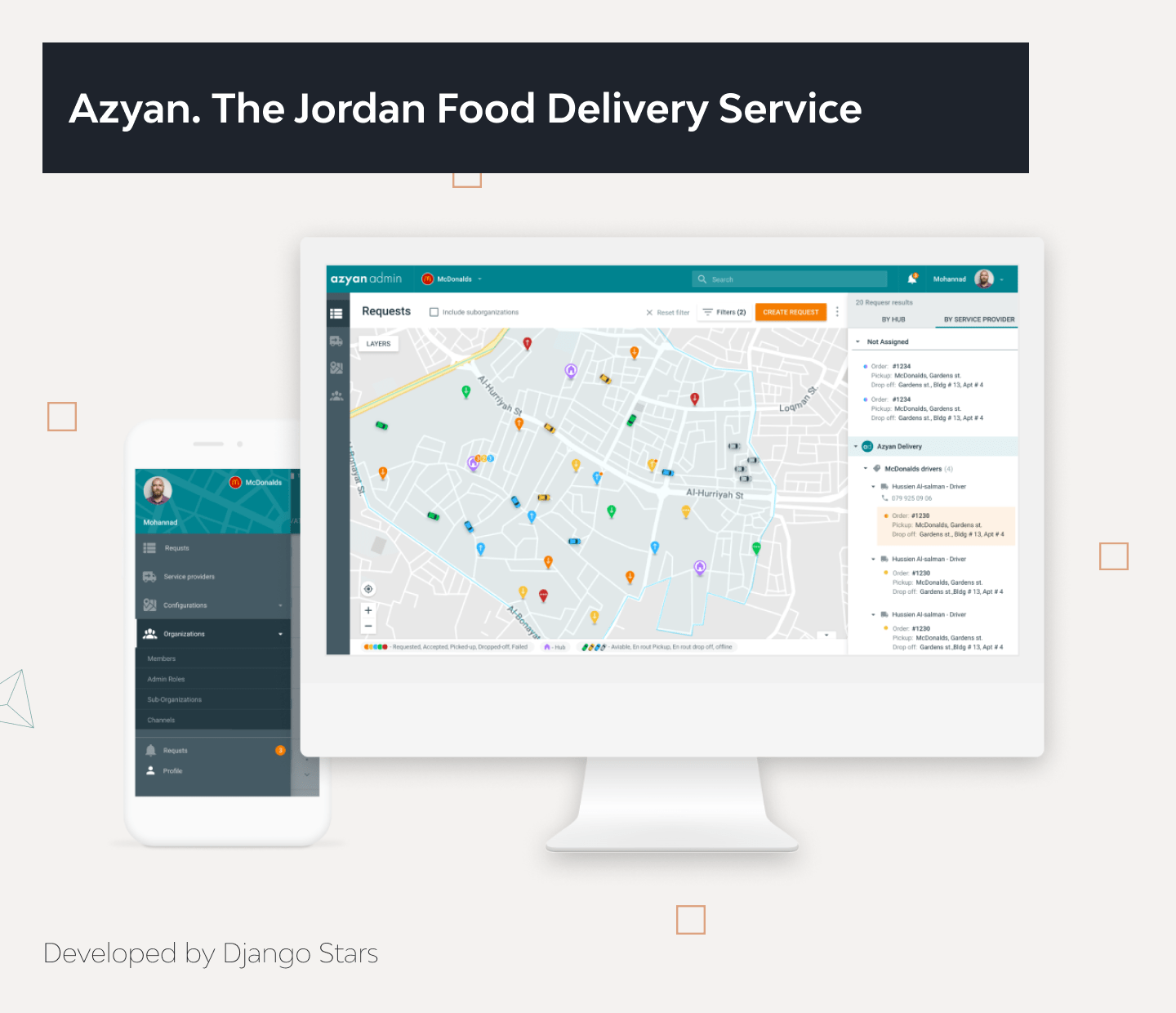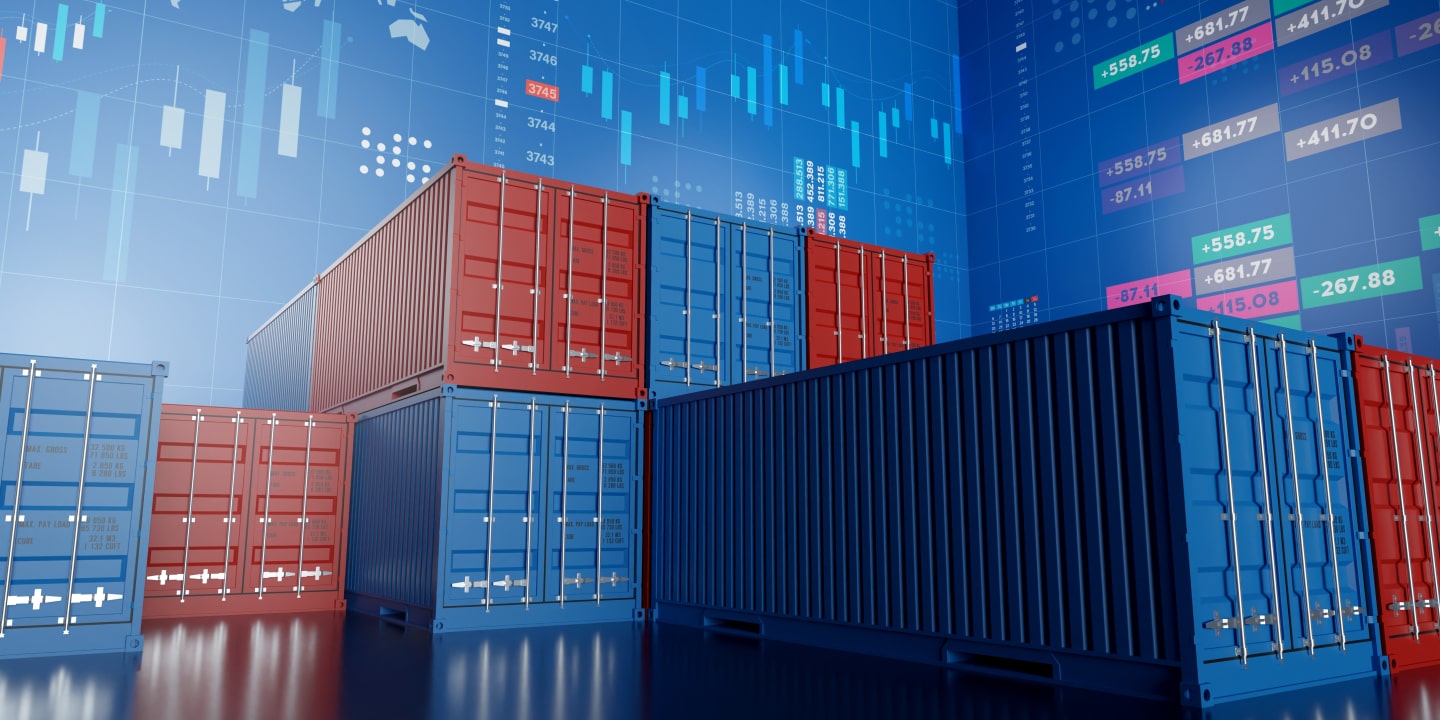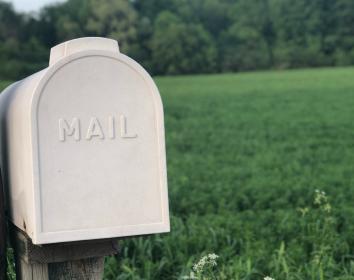Last Mile Delivery Software Development: A Complete Guide
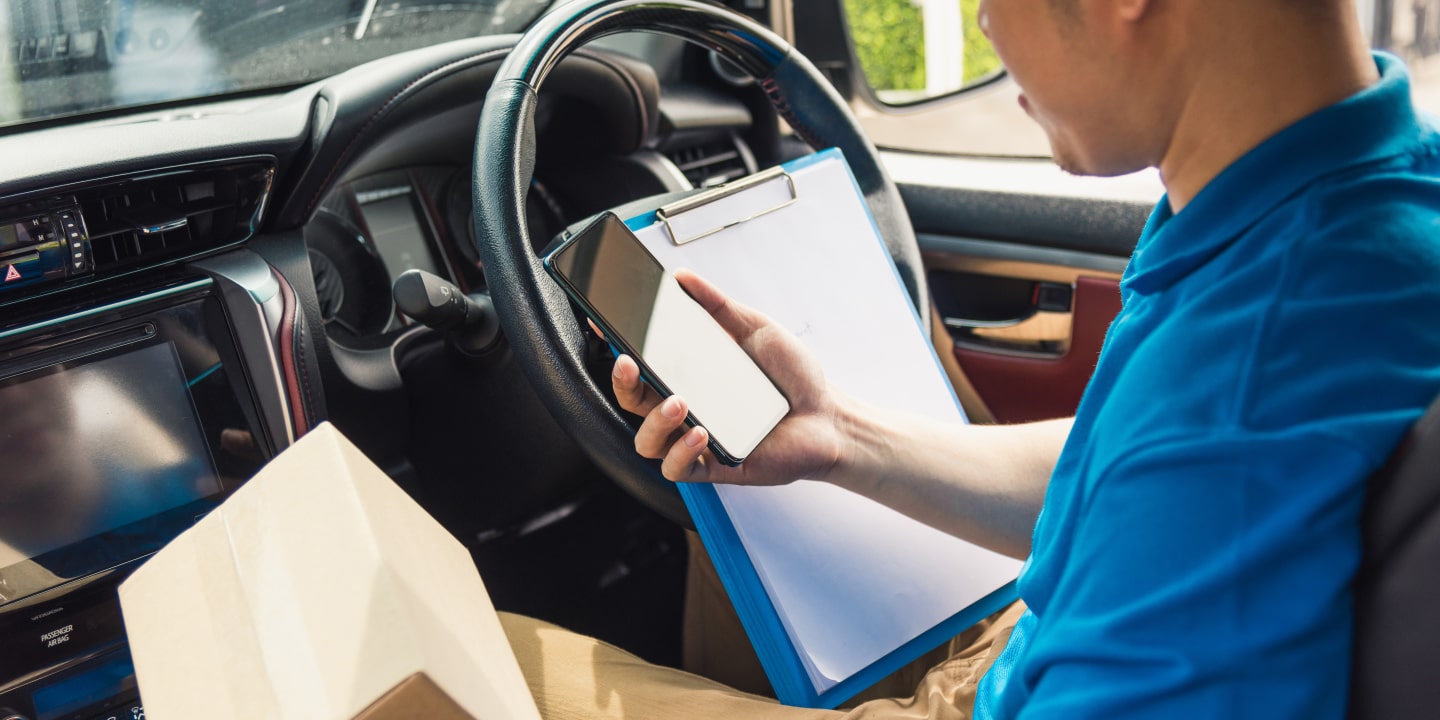
With the rise of e-commerce, businesses are increasingly looking for ways to improve their last-mile delivery services, from optimizing logistics for retail shipments to investing in food delivery app development that enhances customer convenience and satisfaction. This subtle interaction at the very end of the product journey has more impact on how customers perceive a brand than one can imagine. For 85% of customers, a poor delivery experience is a reason to stop buying from a company.
Indeed, last mile delivery is the most important and difficult part of the delivery process. That is why many logistics companies are looking for an outsourcing logistics software development agency.
In this article, as an experienced logistics software development company, we outline the key challenges of last mile delivery and how software can address them. We also delve into the intricacies of last mile delivery software development based on our experience with project like Azyan, delivered by Django Stars.
What is Last Mile Delivery?
Before we delve into the process of creating last mile delivery software, it is necessary to come to grips with the very term “last mile delivery.” This notion describes the final (and the most costly) phase of the logistics pipeline when goods are transported from the warehouse to the end user. Naturally, the primary goal of logistics companies is to ensure quick and efficient product delivery to consumers, and last mile delivery software is designed to help freight organizations in this task.
However, it is at this stage that most issues (known as last mile problems) crop up. Varying customer preferences, low drop volumes, urban congestion, and frequent stops along the route cause longer shipment times and even failed deliveries.
What are the most common roadblocks logistics companies face at this delivery step?
Challenges in Last Mile Delivery
The process of a product “traveling” the last mile is complicated in itself, and no last mile delivery software can remove all these difficulties altogether.
High operational costs
According to statistics, logistics companies account for 53% of total transportation costs when delivering items to customers’ doorsteps. Why? The factors accounting for significant expenditures include long distances to the client’s location, fuel prices, the number of deliveries in a certain area (also known as delivery density), and the necessity to use smaller vehicles or even walk. And sometimes, you have to visit the same address several times because of a failed first attempt, or (God forbid) even a second attempt. Plus, the expenses on buying or developing last mile logistics software matter too.
Route inefficiencies and traffic delays
Without an efficient last mile delivery software solution, employees responsible for route planning may make mistakes in mapping out itineraries, which forces drivers to take longer trips (often with a half-empty trunk). The delivery landscape is also an issue. Urban areas are notorious for their traffic jams and parking restrictions. In rural regions, the major problem is the significant distances to cover, as well as inadequate infrastructure, which can turn into impassable terrain under adverse weather conditions.
Real-time visibility and tracking issues
The absence of real-time parcel tracking hampers logistics organizations’ efforts to ensure the timely delivery of goods. It prevents customers from monitoring the progress of the items they have ordered as they make their way to them. This challenge can be addressed by harnessing high-quality last mile delivery software. Specialized solutions enable both parties to locate the package at any given time and alert personnel if something goes wrong.
High customer expectations for fast delivery
Having ordered something, people want the item here and now. 57% of them demand same-day or, at worst, next-day delivery, but frequently (one-third of customers) choose companies that offer lower shipment prices, probably not realizing that urgent delivery can’t be that cheap. Besides, sustainability is a growing concern for many modern consumers. Such anticipations, as well as considerable competition in the industry, put enormous pressure on logistics firms that go to great lengths to meet tight delivery terms.
Failed or missed deliveries
Unavailable recipients, rescheduled shipment times, missed delivery windows, incorrect addresses, package theft, or logistical errors lead to failed deliveries. Besides, for some reason, customers may want to return the item. As a result, freight costs soar, while the profitability of logistic operations plummets. Customers also suffer, as they don’t receive the item they have paid for, which undermines customer satisfaction and trust, prompting them to opt for a competitive firm for their next purchase shipment.
Most of these bottlenecks can be mitigated, if not eliminated, by integrating robust last mile delivery software.
Core Features of Last Mile Delivery Software
Last mile delivery software is a technical solution designed to eliminate inefficiencies in the final step of the supply chain. It facilitates the effective use of resources needed for the last mile, increases transparency, and improves coordination between the various parties involved in the delivery process — all thanks to the following features:
- Route optimization for determining the optimal route based on urgency, distance, traffic, sudden road closures, weather forecasts, vehicle capacity, delivery time windows, etc., which increases profitability and efficiency.
- Real-time tracking for sending a live tracking link to the customer as soon as the order is ready for delivery. It provides transparency and accountability, minimizing delays, eliminating disruptions, and ultimately boosting customer trust.
- Automated dispatching for assigning drivers to the most appropriate orders and delivery zones based on a variety of factors (location, availability, health conditions, etc.). This functionality of last mile delivery management software reduces the need for specialists in this field, minimizes human-factor errors, and optimizes resource allocation.
- Electronic proof of delivery (ePOD) for documenting successful delivery with GPS-stamped photos, signatures, barcodes, and notes. It helps resolve disputes (in case they arise), cuts down on paperwork, and streamlines the delivery workflow.
- Customer notifications & communication for keeping customers up-to-date on all delivery stages. Such real-time updates allow them to monitor shipment progress, minimize failed deliveries, reduce support inquiries, and enhance customer satisfaction.
- Fleet management for maximum visibility into driver and vehicle performance. The feature ensures optimal delivery routes, regular fleet maintenance, balanced resource utilization, driving safety, and stringent regulatory compliance.
- Analytics and reporting for generating reports on distance traveled, fuel consumption, driver behavior, traffic, performance, and other factors to improve the process. These metrics enable last mile delivery software to present insights into the company’s workflows, pinpoint inefficiencies, forecast demand, optimize resource utilization, and enhance the level of service.
- Integration for seamless interaction between all elements of the enterprise digital ecosystem. The last mile delivery solution should form a unified system with CRM, ERP, and other IT infrastructure components to ensure seamless data exchange and prevent departmental silos.
Last mile delivery management platforms have the potential to automate every aspect of shipment routine, ushering in numerous advantages.
Benefits of Last Mile Delivery Software Development
What do logistics businesses get by making the last mile delivery solution a part of their enterprise infrastructure?
1. Reduced costs
By equipping the final mile delivery solution with the essential roster of functionalities (including customer self-service capability), you minimize the need for human personnel and associated expenditures (salary, workstation, sick leaves, insurances, pension fund contributions, payroll taxes, and more). Another source of OPEX savings is route optimization, which enables your company to cut down on fuel costs and other unnecessary spending.
2. Improved Efficiency
Dispatch and order assignment automation, real-time tracking of information related to traffic and weather, dynamic route optimization, and other pipeline processes handled by last mile delivery platforms contribute to streamlining and facilitating all shop floor routines of a logistics enterprise. Thanks to them, delivery times are dramatically reduced, employee productivity soars, and managers can make knowledgeable data-driven decisions.
3. Enhanced Customer Satisfaction
What do consumers expect from a delivery organization? Fast shipment of the goods they bought, getting the items undamaged, absence of delays, ability to communicate with the company, and low prices for its services. Last mile delivery software development ensures all these perks, leaving customers satisfied with the company. Such clients are likely to relive their positive customer experience and recommend your firm to their social environment, becoming brand advocates and ambassadors.
4. Increased Transparency
Last mile delivery solutions provide a complete visibility into the entire shipment process – from order placement to product delivery. People can monitor their order status, receive real-time updates and notifications on its progress, accurately estimate the arrival time, and adjust their schedules to meet the courier when the package is delivered to their doorstep, thus avoiding disruptions to their work or study routine.
5. Better Resource Management
In the logistics realm, resource management is all about optimizing routes, ensuring driver productivity, and keeping fuel costs to the necessary minimum. The real-time tracking of vehicles’ locations, weather, and traffic conditions, as well as delivery statuses, provided by last-mile tracking tools, allows for improved scheduling, automated assignment distribution, and adaptability to emergencies. Moreover, advanced analytics capabilities supply vital insights into the state of vehicles, enabling managers to plan their maintenance and reduce the number of breakdowns.
You can enjoy all these benefits if you know how to create a last mile delivery solution.
Steps to Build Last Mile Delivery Software
A typical last mile delivery software development roadmap encompasses the following stages.
1. Assessment of operational needs
This is a mission-critical step in building last mile software solutions because it enables you to avoid wasting money on functionalities you won’t need in your shop floor activities. A conventional operational needs estimation involves an in-depth study of existing workflows, personnel, technologies, and infrastructure, as well as resource analysis, performance benchmarking, and the identification of bottlenecks and inefficiencies. The major deliverable of this stage is a comprehensive review, listing potential areas for improvement where the application of last mile delivery software is vital.
2. Choosing an IT vendor
As a rule, logistics organizations don’t have an IT department of their own to task it with last mile delivery software development. If this is your case, selecting a software vendor is your next step. There are several key factors you should consider when opting for a company to develop the last mile delivery solution for you: the potential vendor’s expertise and experience in the niche, similar projects they have completed, the tech stack its employees wield, the customer support opportunities they extend, and prices for their services. When deciding on a partner, study their websites, paying close attention to portfolio and testimonials, and consult IT vendor ranking resources (such as Clutch and GoodFirms).
3. Integration planning
Your future last mile delivery tool won’t function in isolation. It will become one of the digital systems that comprise your enterprise IT infrastructure. All elements of the ecosystem should be able to securely share data, seamlessly interact with one another, remain open to upscaling, and facilitate collaboration between departments. That is why, before diving into software creation, you should create an inventory of all your software resources and consider how the old and new components can be successfully integrated.
4. Development and QA
This is the most time- and effort-consuming phase in the SDLC of any digital product, and the last mile delivery platform is no exception. During it, the solution’s architecture is designed, backend and frontend elements are created, all necessary features are developed, the UI is built, and integrations are implemented. When the development is complete, the solution undergoes a comprehensive quality assurance process to ensure that the system contains no bugs or glitches and is secure against data leaks and penetration attempts.
5. Pilot and feedback
Now, the newly created solution is ready to be initially tested in a controlled environment by a small audience. While it is submitted for trial usage, all participants are encouraged to voice their impressions and opinions regarding the system’s performance, user experience, and other operational aspects. All technical issues, integration failures, usability inadequacies, and workflow gaps are registered and addressed by software engineers and designers.
6. Iteration and scaling
After the solution is found to be completely functional and bug-free, it is launched into operation. However, the development team can’t rest on its oars. The company that commissioned the last mile delivery platform may realize that it needs new features, expand the system’s capacity, or introduce modifications that align with the organization’s evolving needs or shifting consumer demands. If it happens, the vendor steps in to render such services or exercise routine maintenance measures.
The successful implementation of a last mile delivery software project is impossible without proper technologies.
Technology Stack for Last-Mile Solutions
Last mile delivery software development of a medium-sized solution with a standard feature set requires the following technologies.
- Programming languages. The most popular ones are Java, Python, Ruby, and Node.js.
- Frontend frameworks. The range of options here includes HTML, JavaScript, CSS, Angular, React, and Vue.js.
- Backend technologies. Choose among Express.js, Ruby on Rails, and Django.
- Databases. Quite predictably, MongoDB, PostgreSQL, and MySQL.
- Geolocation services. The must-haves here are APIs that let the solution utilize Google Maps, Mapbox, and HERE.
- Cloud services. Any of the mainstream cloud providers (AWS, Google Cloud Platform, or Microsoft Azure) will do.
- Mobile technologies. To develop a last mile delivery mobile app, we leverage Kotlin, Java, React Native, and Swift.
If your business and technical requirements for last mile delivery platforms are pretty much standard, you can utilize boxed solutions that are quite numerous on the market.
The Best Last Mile Delivery Software Examples
As companies look for ways to improve the last mile and make it more cost-effective, software vendors are unceasingly bringing new solutions to market. When we type “last mile delivery software” into G2’s search box, we get an endless list of options.
Here are some of the solutions that stand out from the rest.
| Name | Description | Main features | Pricing |
|---|---|---|---|
| Onfleet | Comes with an app (Android/iOS) for drivers and a web dashboard for dispatchers. The easiest-to-use last mile solution, according to G2. | For dispatchers:
For drivers:
For customers:
| From $500/month and beyond |
| Tookan | Consists of a dashboard for driver tracking and apps for managers, drivers, and customers | For managers:
For drivers:
For customers:
| From $99/month and beyond |
| FarEye | Provides parcel-level visibility and enables companies to handle deliveries at scale. Consists of a suite of products — such as Ship, Route, Track, Execute, Experience, Grow, Analyze — for various stakeholders in the last mile delivery process. | (Although FarEye supports all last mile stakeholders, we'll present the features for the key players — managers, drivers, and customers) For managers:
For drivers:
For customers:
| From $20/user/month and beyond |
If these solutions fall short of your expectations, both in terms of business and technology, you may want to consider custom software development. If you do, you should make sure the solution utilizes the latest advancements in the IT realm.
Last Mile Delivery Software Trends and Innovations
As people rely more and more on deliveries, the last mile delivery software market is growing: at the very moment, it’s expanding at a CAGR of 9.3%.
For businesses, this means that competition is getting tougher, and they need to stand out from the crowd to stay afloat. To win over their audience, many are turning to technological innovations.
Artificial intelligence (AI)
It’s hard to imagine a modern delivery solution without dynamic routing based on sifting through massive amounts of data affecting delivery time. The implementation of this feature is only possible with artificial intelligence.
Of course, in the past, this task was done by a driver with or without the help of a static routing solution. But as the number of vehicles, customers, and destinations increases, the required calculations become more time-consuming and error-prone. That is why last mile delivery is no longer possible without artificial intelligence that can determine an optimal route in real-time.
IoT
The Internet of Things has long been an integral part of logistics operations. And the trend isn’t going anywhere.
In fact, most advanced features of last mile delivery software wouldn’t have been possible without IoT. This technology enables real-time tracking of parcel movements (through integration with GPS ), collection of important data (weather, traffic, etc.) for route optimization, monitoring delivery vehicles and their performance for fleet maintenance, using smart delivery lockers, and much more.
Drones
With sustainability and efficiency at the heart of companies’ efforts to improve their last mile, drones are becoming increasingly popular.
Wing, the drone delivery company owned by Alphabet, plans to cover “millions of deliveries for millions of consumers at a lower cost per delivery than ground transportation” by mid-2024. In addition, 22% of US retailers plan to use drones for their delivery services in the next five years.
We at Django Stars keep our finger on the pulse of these disruptive innovations when crafting last mile delivery solutions.
Develop Last Mile Delivery Software with Django Stars
Hardly anyone wants to juggle between different solutions or settle for an inferior software product. Fortunately, custom development can be a way out. As a trusted software development provider, Django Stars knows how to deliver top-notch results within time and budget. Our qualified and certified developers have vast experience in creating bespoke products for logistics enterprises, including last mile software solutions. To illustrate how we tackle such projects, consider the Azyan case study.
Azyan is a Jordanian food delivery service that delivers from a variety of restaurants within 20 minutes. However, in 2018, it was no more than a product concept that required a team to be transformed into a working solution. And Django Stars became that team – Azyan decided to outsource all the technical details to us while focusing entirely on the business side of things.
As a result, we rolled out a powerful platform that consists of the following components:
- A bilingual (English/Arabic) web interface for customers that shows restaurants on a map, allows placing orders and tracking their deliveries in real-time
- A mobile app for drivers to accept and pick up orders, use a live map to see dynamically optimized routes, and communicate with customers to clarify delivery details
- An interface for restaurants and stores with delivery zone filtering, driver management, and a comprehensive level-based access system for restaurant and store chains
This project demonstrates the power of tech expertise in last mile delivery software development. And today, thanks to our assistance, Azyan managed to tap into new markets while delivering goods perfectly on time.
Conclusion
Technology-enabled last mile delivery has become a necessity for companies with extensive operational areas. With the right solution, these businesses can deliver to the right customer on time using only the resources they need – no matter how large their customer base is or how many cities (or countries) they operate in.
If that is what you are after, don’t hesitate to contact our team regarding custom last mile delivery software solution creation, routes optimization software development, or other tailored logistics technology that helps reduce costs, improve efficiency, and boost customer satisfaction across the entire supply chain. We’ll be happy to help.
- What are the benefits of last mile delivery software?
- Streamlined processes, reduced delivery times, enhanced operational efficiency, cost reduction, informed decision-making, automation, scalability, and sustainability.
- How much does it cost to develop a last mile delivery app?
- Like with any software solution, the cost of last mile delivery app development depends on an array of factors. The number of experts, the tech stack, the business and technical requirements, the niche specifics, and the project stage — all will influence the final cost.
- What is the technology stack for last mile delivery app development?
- The tech stack for building a last mile delivery app typically consists of technologies for frontend and backend development, API integration, geolocation and tracking feature implementation, hosting, analytics, data encryption, and beyond.
- How long does it take to implement custom software for last mile delivery?
- Just like the cost and technology stack, the last mile delivery software development time depends on the project requirements. Implementation takes between three and seven months (and beyond, depending on project specifics).

